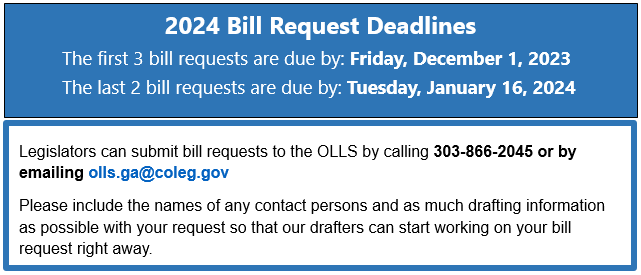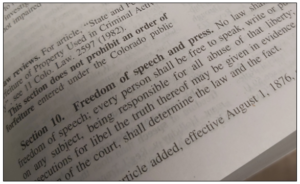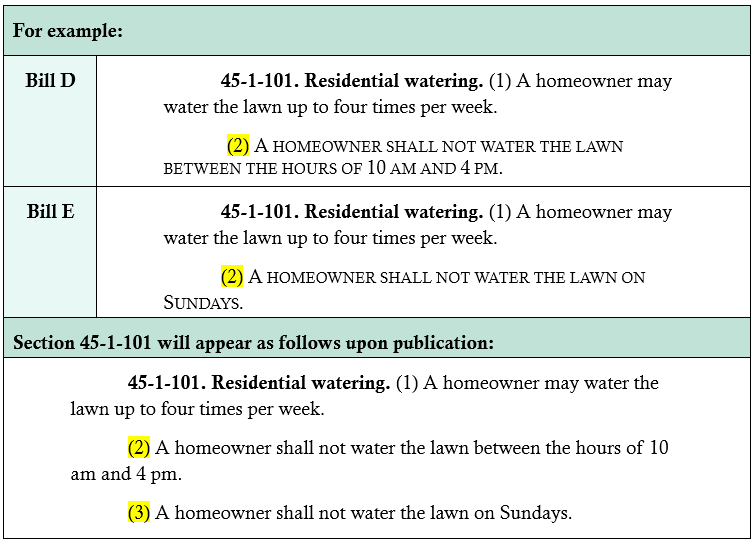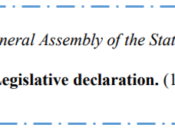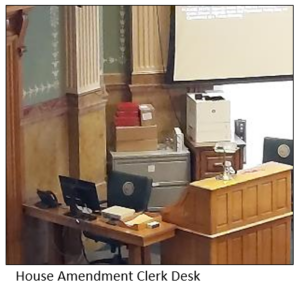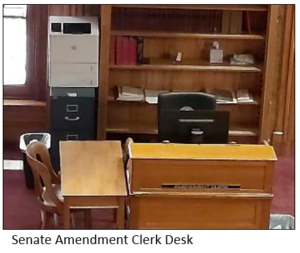by Jery Payne
1. Is Adam a Burglar?
Adam worked at a truck shop. His duties included delivering clothes to the other workers’ lockers. Although it was possible to secure the lockers using a padlock, none of the workers actually used locks. The workers should have used the locks, however, because several workers noticed money missing from their work lockers. Suspecting theft, one of the workers installed a small video camera in the room. The camera recorded Adam looking through the lockers and taking items from them. This led to Adam’s arrest for burglary and theft.
At trial, Adam was found guilty of the burglary charge. Here’s the law, section 18-4-204, C.R.S., forbidding burglary:
A person commits third degree burglary if with intent to commit a crime he [sic] enters or breaks into any vault, safe, cash register, coin vending machine, product dispenser, money depository, safety deposit box, coin telephone, coin box, or other apparatus or equipment whether or not coin operated.
Adam appealed the guilty verdict, but the appeals court affirmed the conviction because he “entered or broke into what is tantamount to a vault.” The Colorado Supreme Court, however, reversed the appeals court because of ejusdem generis.
Ejusdem generis is a Latin phrase that means “of the same kind or class.” This doctrine of statutory interpretation holds that, when a catchall phrase follows a list, the catchall phrase should be read to apply only to persons or things that are of the same kind as the items on the list. This means that the catchall phrase should not be read to cover everything that it says it covers. Instead, the catchall phrase should be limited to covering persons or things that are similar or in the same class as the things on the list.
Ejusdem generis is actually a specific application of another rule of statutory interpretation: Every word in a statute must be given effect. When, for example, a statute applies to raspberries, strawberries, or other fruit, the words raspberries and strawberries are redundant with the word fruit. Therefore, reading fruit literally to mean all fruit means that the words raspberries and strawberries don’t do anything, and they don’t have any effect. So courts have decided that, to give every word meaning, we have to use the redundant items on the list to narrow the meaning of the catchall.
Returning to Adam’s burglary case, the Colorado Supreme Court reasoned that all the items in the statutory list “are almost always used to contain money or valuables exclusively: vaults, safes, cash registers, coin vending machines, product dispensers, money depositories, safety deposit boxes, coin telephones, and coin boxes.” Therefore, the list doesn’t include equipment that holds mere property; the list includes only equipment that holds money and valuables. “Thus, whether any given container falls within the purview of the statute depends on whether the apparatus or equipment is merely a storage receptacle or is of the same kind or class as those items enumerated in the statute, that is, whether the container is designed for the safekeeping of money or valuables[.]” So, the Colorado Supreme Court held that Adam had not committed burglary.
2. Ejusdem Generis Is Squirrely.
Imagine that you’re a court interpreting a statute that reads:
To be imported into Colorado, cherries, tomatoes, cranberries, and other fruit must be inspected by the commissioner of agriculture.
 The statute has three fruits and the catchall of other fruit, so this statute should be read in light of ejusdem generis. The catchall word, fruit, presumably shouldn’t be read to cover all fruit, so you must decide what types of fruit aren’t covered. Here are some options:
The statute has three fruits and the catchall of other fruit, so this statute should be read in light of ejusdem generis. The catchall word, fruit, presumably shouldn’t be read to cover all fruit, so you must decide what types of fruit aren’t covered. Here are some options:
- The listed fruit, cherries, tomatoes, and cranberries, aren’t citrus, so no limes;
- The listed fruit have skin that is normally eaten, so no pineapples;
- The listed fruit are red, so no blueberries; or
- The listed fruit are spherical, so no bananas.
Which of these options is the right class? Which do you choose? Do you choose all of them?
Wouldn’t it be better to avoid this guessing game?
Sutherland’s Statutory Construction explains that ejusdem generis “expresses a meaningful insight about language usage that can be a relevant aid, if not a simple and certain exponent….”[1] When it passes a law, the General Assembly is trying to achieve a goal. Doesn’t this mean that the body wants as much certainty as possible?
The concern isn’t whether the rule makes sense; the concern is that the rule is a wellspring of uncertainty.
In Adam’s burglar case, the appeals court believed the statute applied to lockers, but the Colorado Supreme Court held that it didn’t. Regardless of what the General Assembly wanted, two courts came to opposite conclusions. Wouldn’t it be better to draft the statute so that both courts read the statute the same way?
3. Don’t Shroud the Law in A Mist; Do Away with The List!
How should we improve the burglary statute? We can avoid the issue by not using a list:
- If the intention is to make the burglary statute apply to lockers, then forgo the list. Write something like, “A person commits third degree burglary if, with intent to commit a crime, the person enters or breaks into a container used to store property.”
- If the intention is, as the Colorado Supreme Court held, to apply only to a container that is used to store valuables, write something like, “A person commits third degree burglary if, with intent to commit a crime, the person enters or breaks into a container used to store money or valuable property.”
The ambiguity is removed by redrafting the provision to get rid of the list.
4. Sometimes, A Belt and Suspenders Are Necessary.
I imagine that every drafter at the Capitol has heard from a bill’s proponents that “We need a belt-and-suspenders” provision. This is legislative shorthand for “we may need some redundancy.” In stakeholder negotiations, it is sometimes necessary to list an item or two in a statute to assuage the concerns of a nervous stakeholder.
For example, a stakeholder may be worried that the word fruit won’t be read to include tomatoes and peppers. This is frequently what leads to phrases like tomatoes, peppers, and other fruit. Recall that ejusdem generis applies when a catchall follows a list, so the word fruit may be limited in some way to not apply to all fruit. Maybe a court will hold that the phrase tomatoes, peppers, and other fruit applies only to less-sweet fruit or, maybe, only to fruit that’s native to North America. If all fruit is meant to be covered, the phrase should be rewritten.
This is when it makes sense to use the word including:
To be imported into Colorado, fruit, including tomatoes and peppers, must be inspected by the commissioner of agriculture.
This is better than tomatoes, peppers, and other fruit because courts usually hold that the words includes and including enlarge or extend rather than limit the general term. Here are some examples:
One note of caution: it is possible to find cases where an including phrase has been held to be limiting out of a desire to give every word effect. An example is Shelby Cnty. State Bank v. Van Diest Supply Co. This case dealt with a lien on
[A]ll inventory, including, but not limited to, agricultural chemicals, fertilizers, and fertilizer materials sold to Debtor ….”[Emphasis added.]
In this case, the 7th circuit explained that:
[I]t would be bizarre as a commercial matter to claim a lien in everything, and then to describe in detail only a smaller part of that whole. … But if all goods of any kind are to be included, why mention only a few? A court required to give “reasonable and effective meaning to all terms” must shy away from finding that a significant phrase (like the lengthy description of chemicals and fertilizers we have here) is nothing but surplusage.
So the court did interpret the word including as limiting, and the judges didn’t care that the contract used the phrase but not limited to. Therefore, it is better to avoid using a list. But if that isn’t an option, then use an including phrase.
[1] N. Singer, 2A Sutherland Statutory Construction § 47.07 (Seventh Edition)

